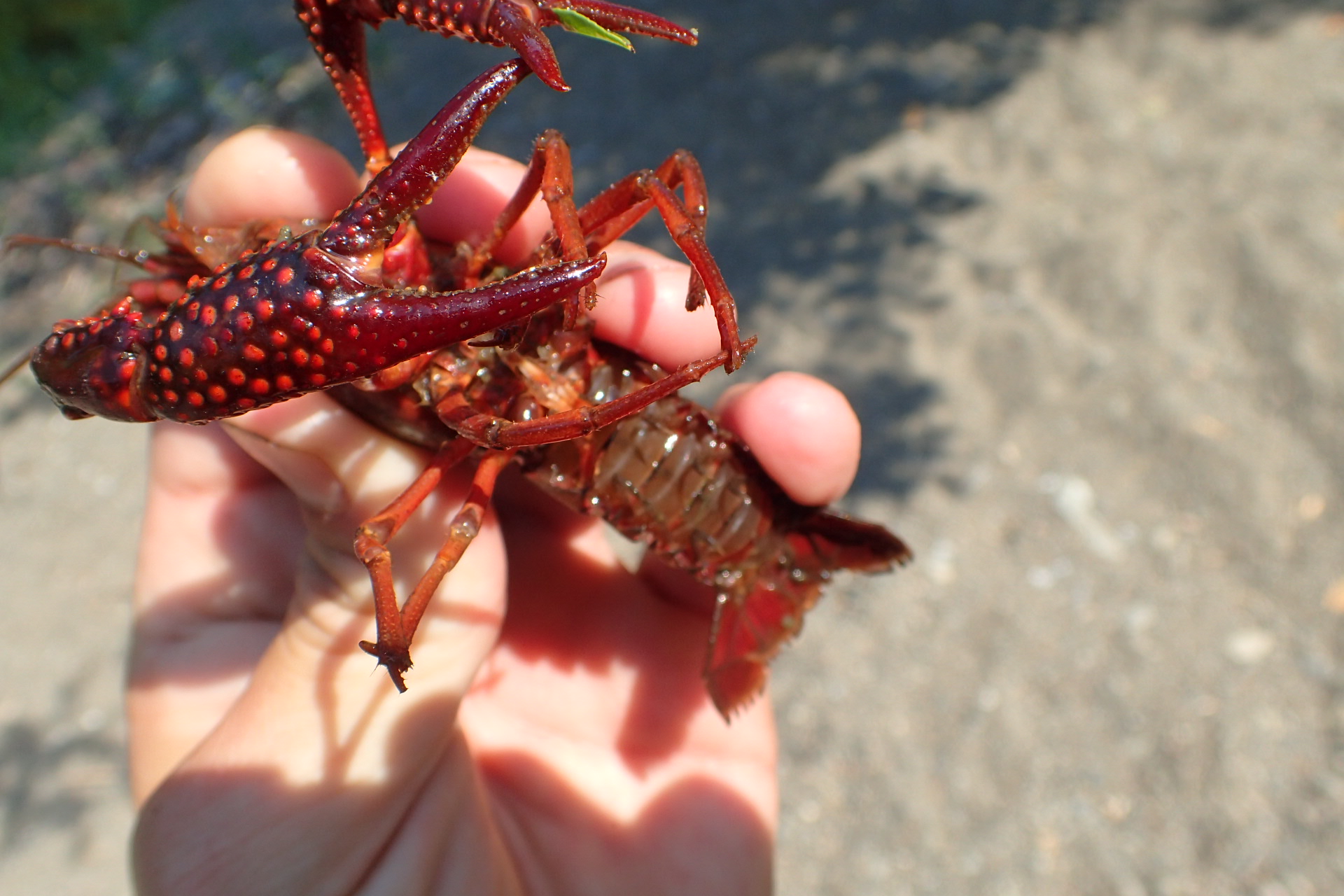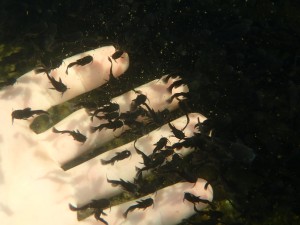
Phil Georgakakos sent these photos yesterday of two invaders–the red swamp crayfish, Procambarus clarkii, and bullheads tentatively identified by Mary Power as black bullheads, Ictalurus melas. (It may be a brown bullhead, check out the pectoral spine-if smooth, black, if barbed, brown bullhead, I. nebulosus). Phil and I had seen red swamp crayfish in S.Fk. Eel just below its confluence with Ten Mile Creek near Laytonville last March (see previous post), and Sarah Kupferberg and I have found them upstream within the reserve later, but all the individuals we saw were dead. Phil yesterday found the first live specimen–a male (see the claspers where its belly button would be, were it a placental mammal…).


While we are concerned about these invaders harming native species in the Eel, I have to mention how cool bullheads are. These catfish know each other individually through chemical recognition–fish respond very differently when “enemy” vs “friend” water is poured into their aquarium (google John Todd’s article in Scientific American).

Mother and Dad take care of the fry (the little black guys with adorable mustaches in Phil’s photo, above.), marching them around pool bottoms in little swarms as they learn to feed. But what are they feeding on? Bill Dietrich was just wondering if they, among other reasons, may be why we no longer see little native freshwater mussels, and are so worried about their failure to recruit in rivers along the North Coast…bullheads suck up their food from the substrate, and this might include newly settled mussels in depositional pool habitats…